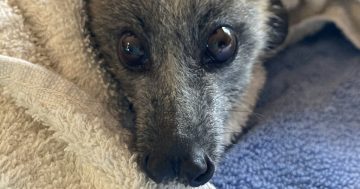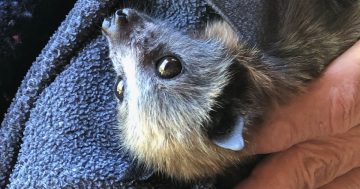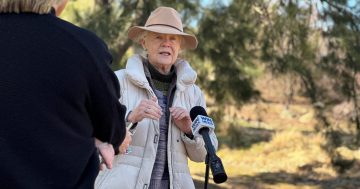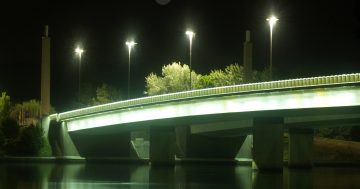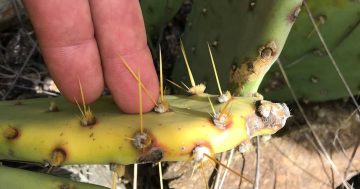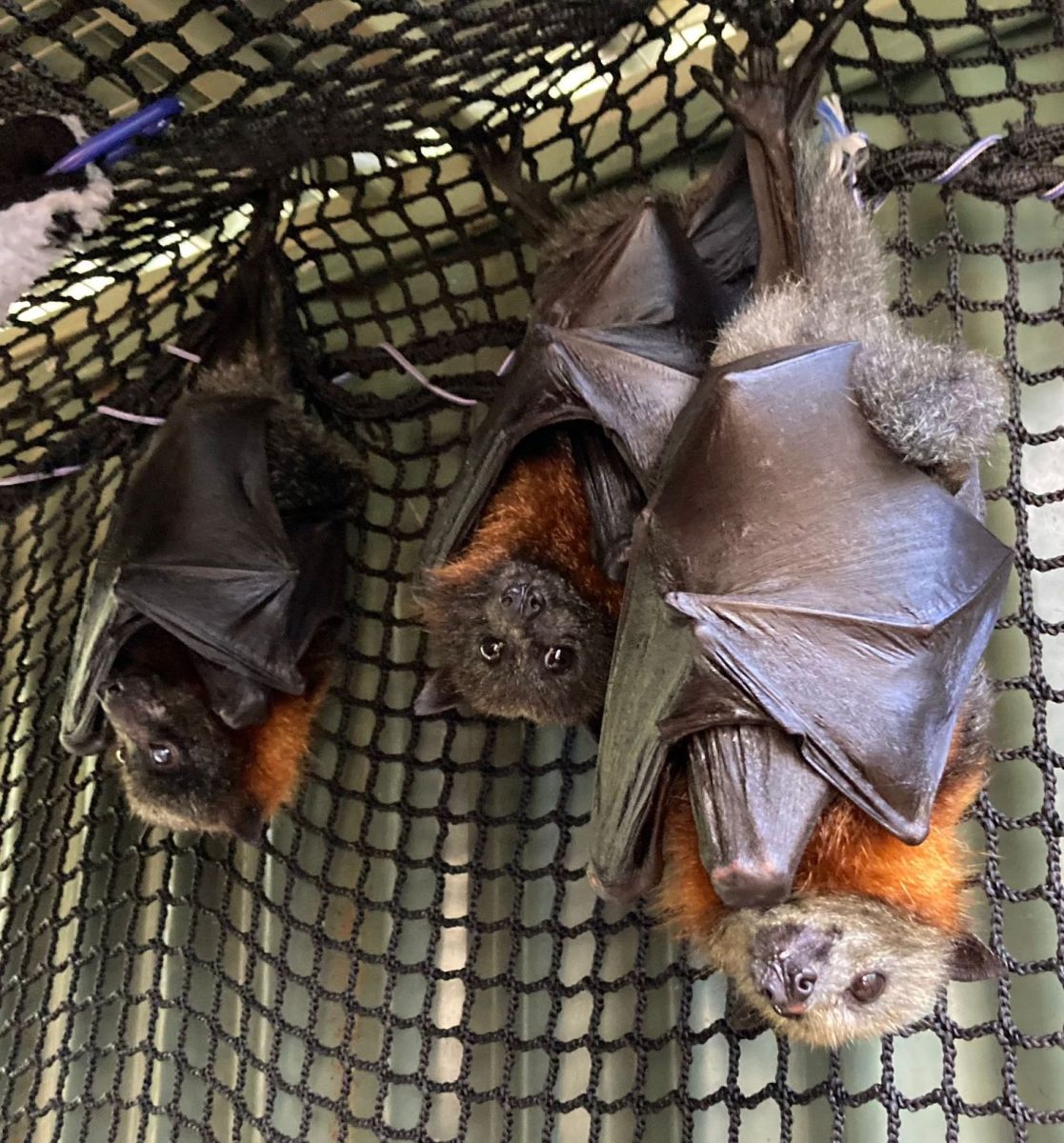
ACT Wildlife previously helped flying foxes Frank, Alexander and Marlon, who became entangled in fruit tree netting and were rescued. Photo: ACT Wildlife.
The ACT Government has introduced legislation to ban the use of unsafe fruit tree netting in gardens across Canberra.
On Tuesday (19 September), the ACT Government introduced an amendment to the Nature Conservation Act 2014 to ban netting with holes greater than 5 mm. These larger nets can trap animals foraging for fruit, resulting in serious injury or death.
“This bill will prohibit the use of inappropriate fruit netting in ACT residential premises to protect our wildlife from net entanglement that may lead to injury or death,” ACT Environment Minister Rebecca Vassarotti told the Assembly.
“This change from unfriendly to wildlife-friendly netting may seem like a small one, but it can impact the survival of vulnerable wildlife.
“Every year, thousands of native birds, reptiles and small mammals get entangled in netting draped over bushes and fruit trees … many of these animals do not survive.”
The bill will make it an offence to use prohibited fruit netting to cover plants in residential premises in the ACT.
While the prohibited netting will still be available for sale in the ACT, retailers must display a prominent sign stating that the net’s use is restricted due to the risk of wildlife injury or death. The sign must reference the Nature Conservation Act 2014 and state that penalties apply to offences.
“Retailers such as Bunnings have already ceased to sell non-wildlife-friendly netting. We are optimistic that other retailers will follow suit,” she said.
The move has been welcomed by ACT Wildlife, which has been working with the government to tackle the issue of unsafe wildlife netting.
“It’s wonderful, absolutely wonderful news,” ACT Wildlife flying fox coordinator Clare Wynter told Region.
She said the organisation had been pushing for the change for the past two or three years and had worked with Jo Clay MLA on the issue.
The government introduced the legislation in response to the Private Member’s Bill introduced by Ms Clay in October 2022.
Ms Wynter said the larger netting is particularly harmful to Canberra’s Grey Headed Flying Fox population, a vulnerable species on the endangered list.
Ms Vassarotti said over the past 10 years, 802 flying fox rescues were recorded in the ACT alone, nearly half due to net entanglement. Around a quarter of those rescued from netting couldn’t be saved.
“They are the ones we primarily get entangled,” Ms Wynter said.
“If the netting is lying loose, lizards and snakes can get caught,” she added, explaining that this can stop them from shedding their skin, and if there is significant injury, the animals may need to be euthanised.
Ms Wynter said that, anecdotally, the number of netting entanglement rescues undertaken by ACT Wildlife has fallen, suggesting Canberrans are already taking steps to ensure their fruit nets do not pose a risk to local wildlife.
In preparation for the ban, earlier this month, ACT Wildlife launched a program with funding from the ACT Government to replace unsafe netting for free.
Net swaps are taking place throughout September and October at ACT Wildlife’s Jerrabomberra office. Ms Wynter said it will likely continue into the summer, particularly as many trees will not form fruit until November or December, so demand will likely rise.
She said ACT Wildlife had already given out more than 200 4×4-metre nets since the program started.
ACT Wildlife also offers advice on safely installing fruit nets so that they are not a risk to wildlife. Ms Wynter said it’s equally important to tie nets tight and taut to prevent wildlife from getting caught.
For more information on the net swap, and other resources on how to install wildlife-friendly netting, visit the ACT Wildlife website. If you see an injured animal, call ACT Wildlife on 0432 300 033.












